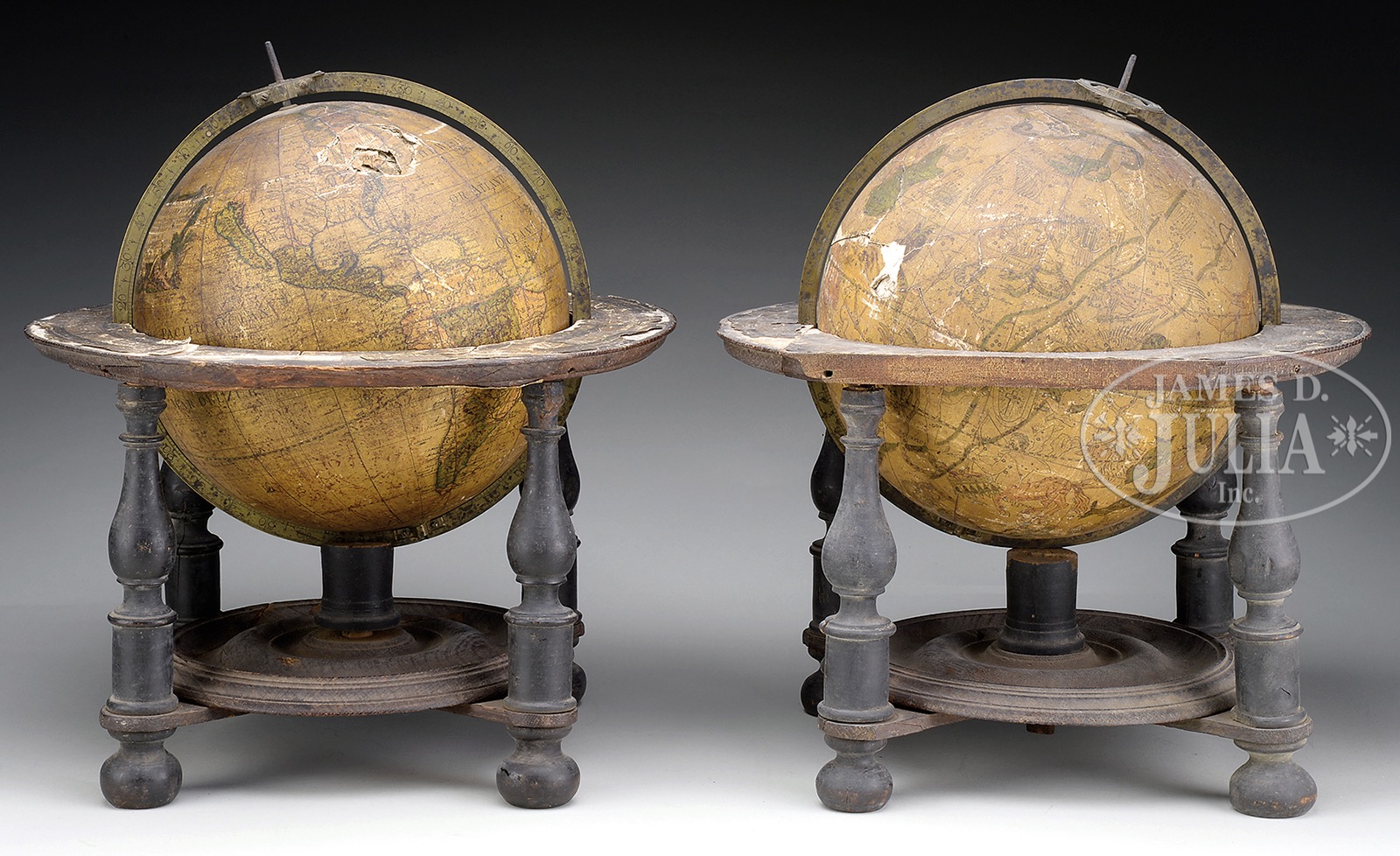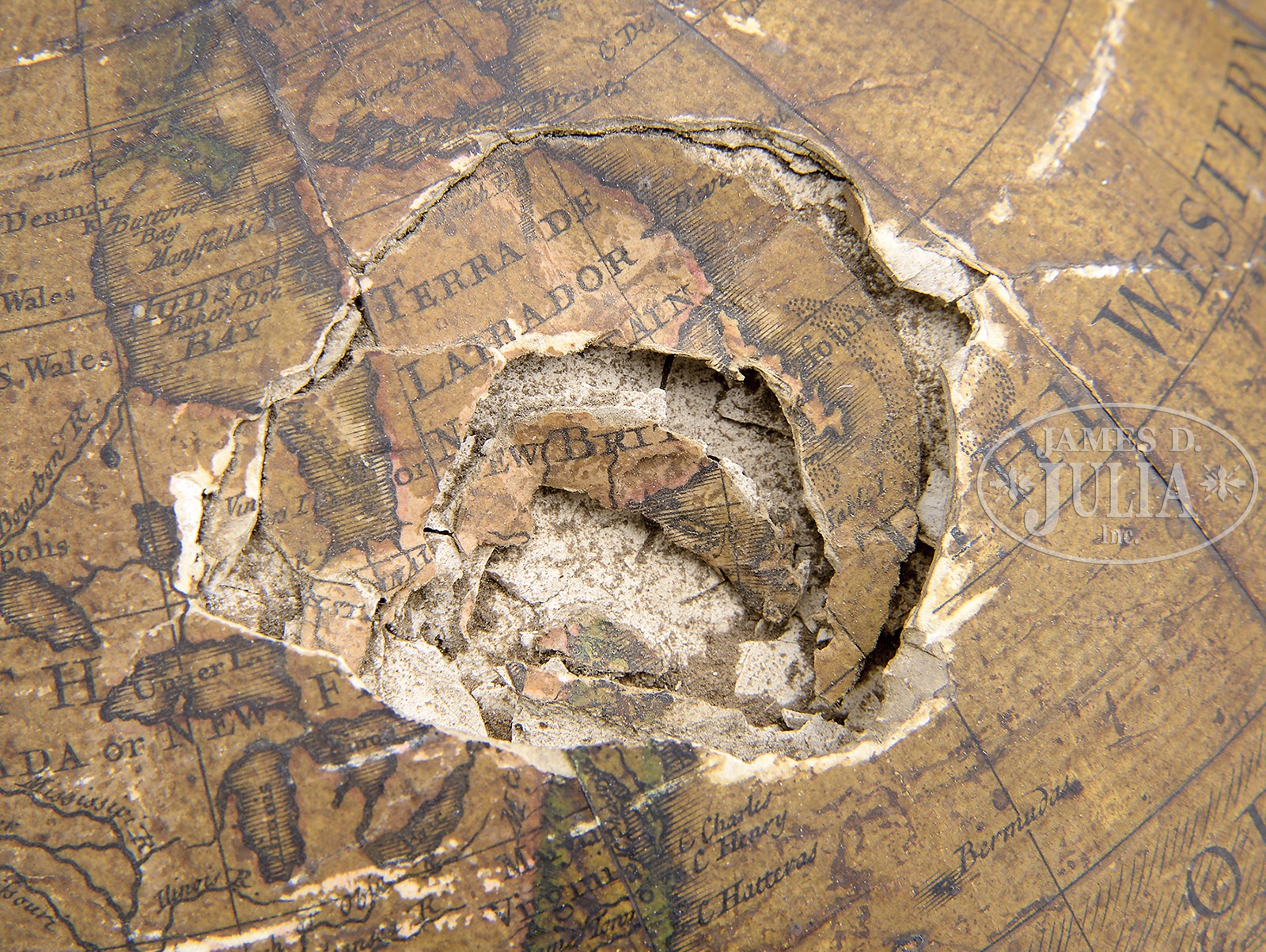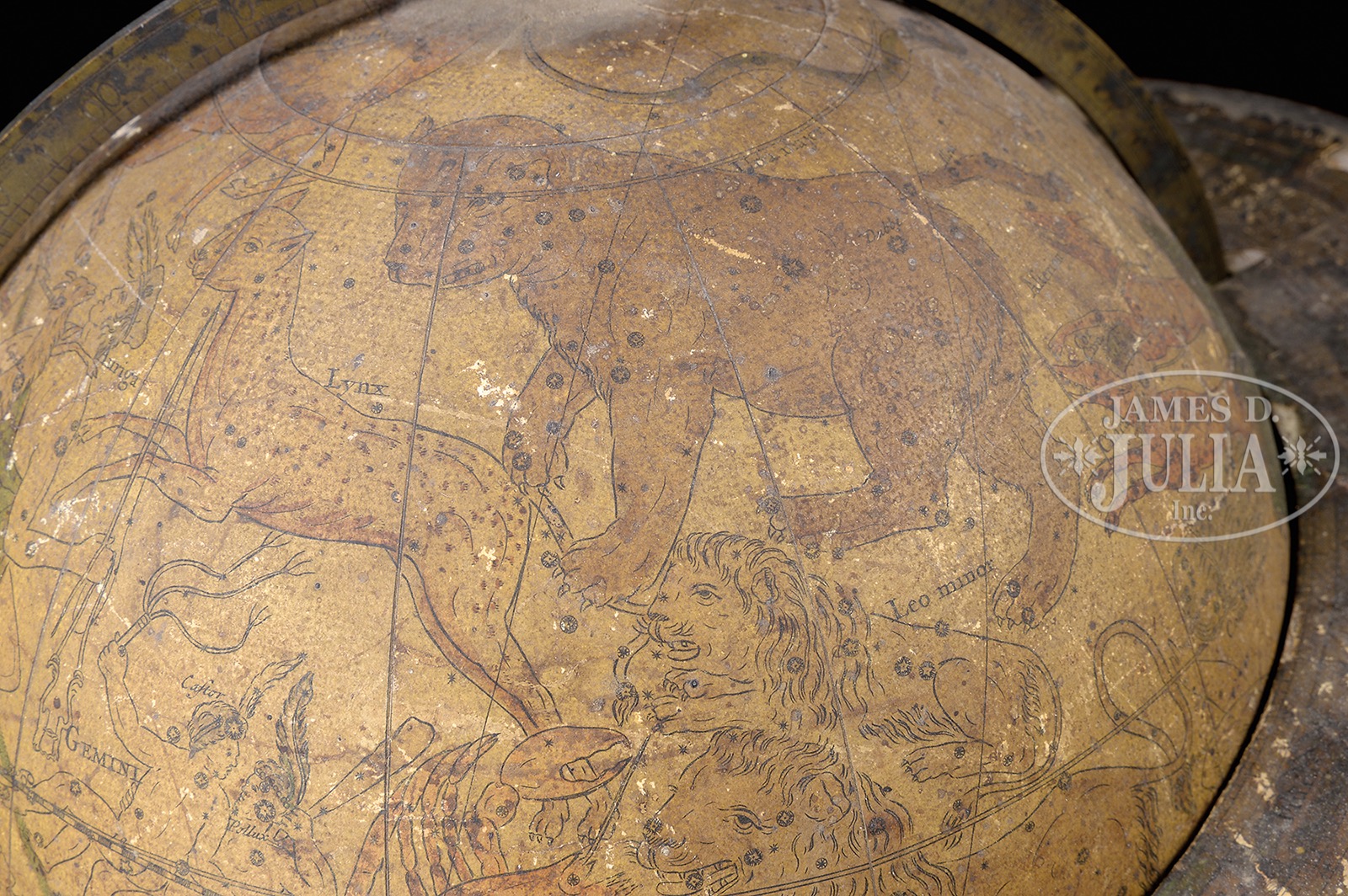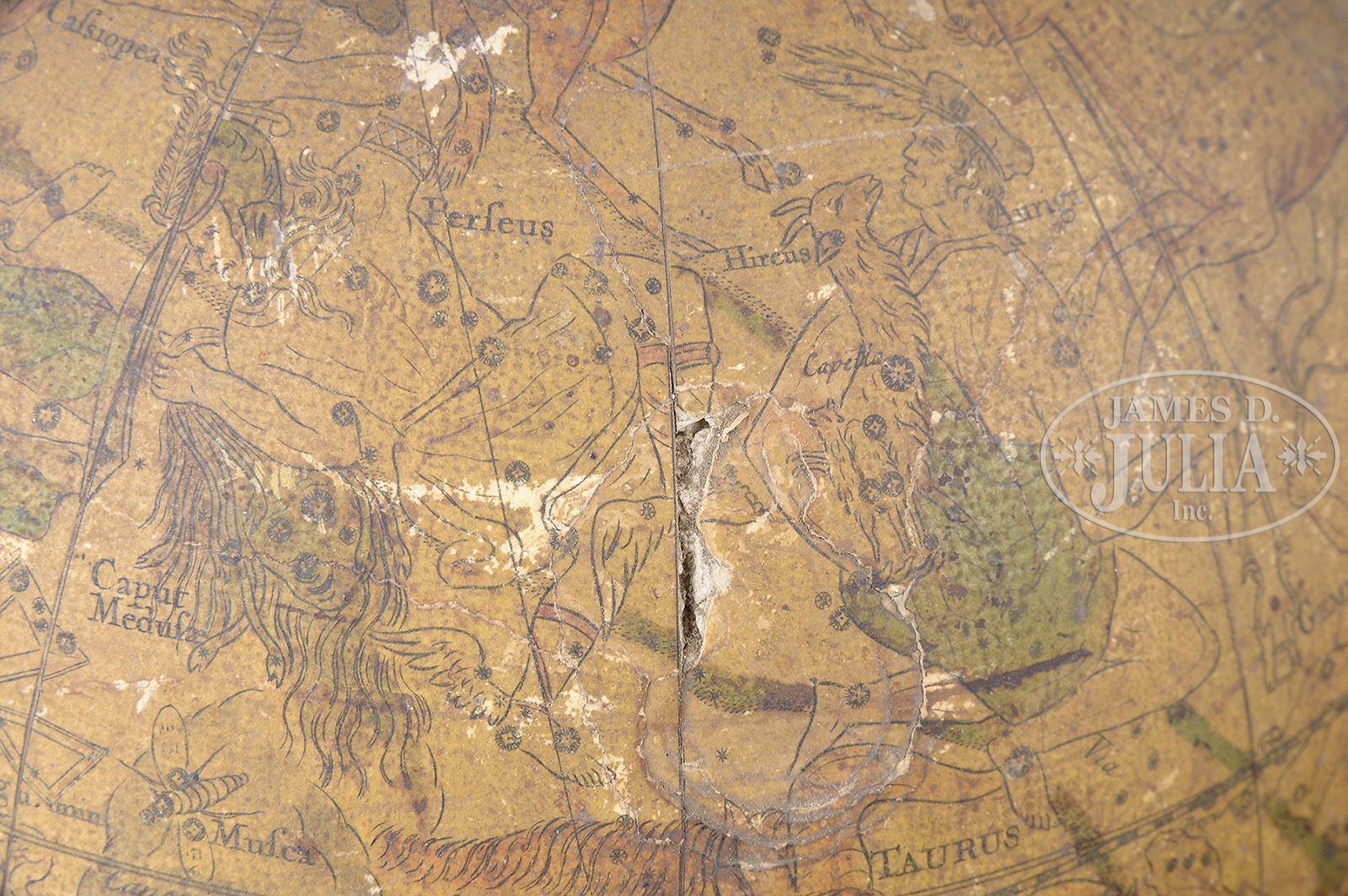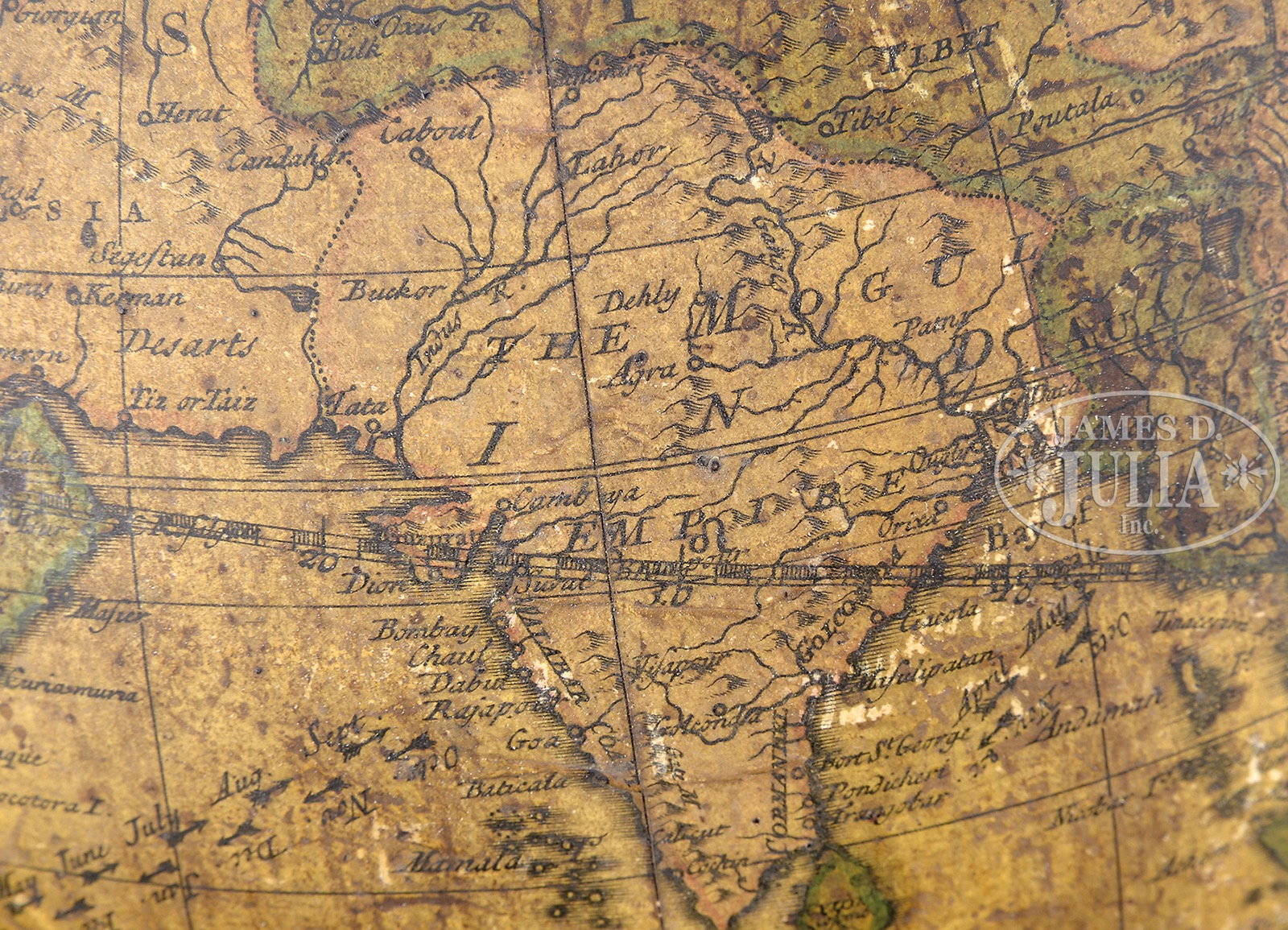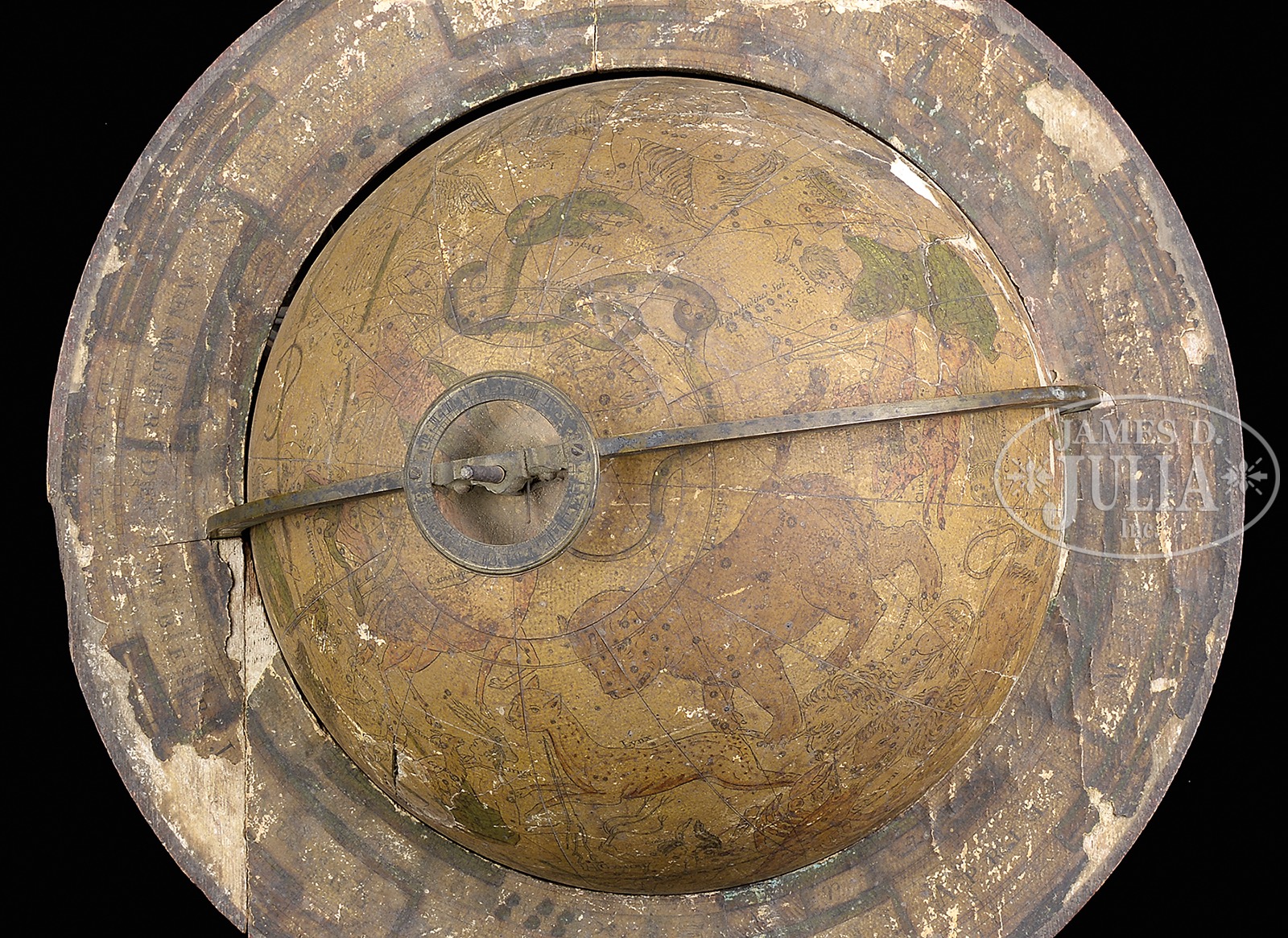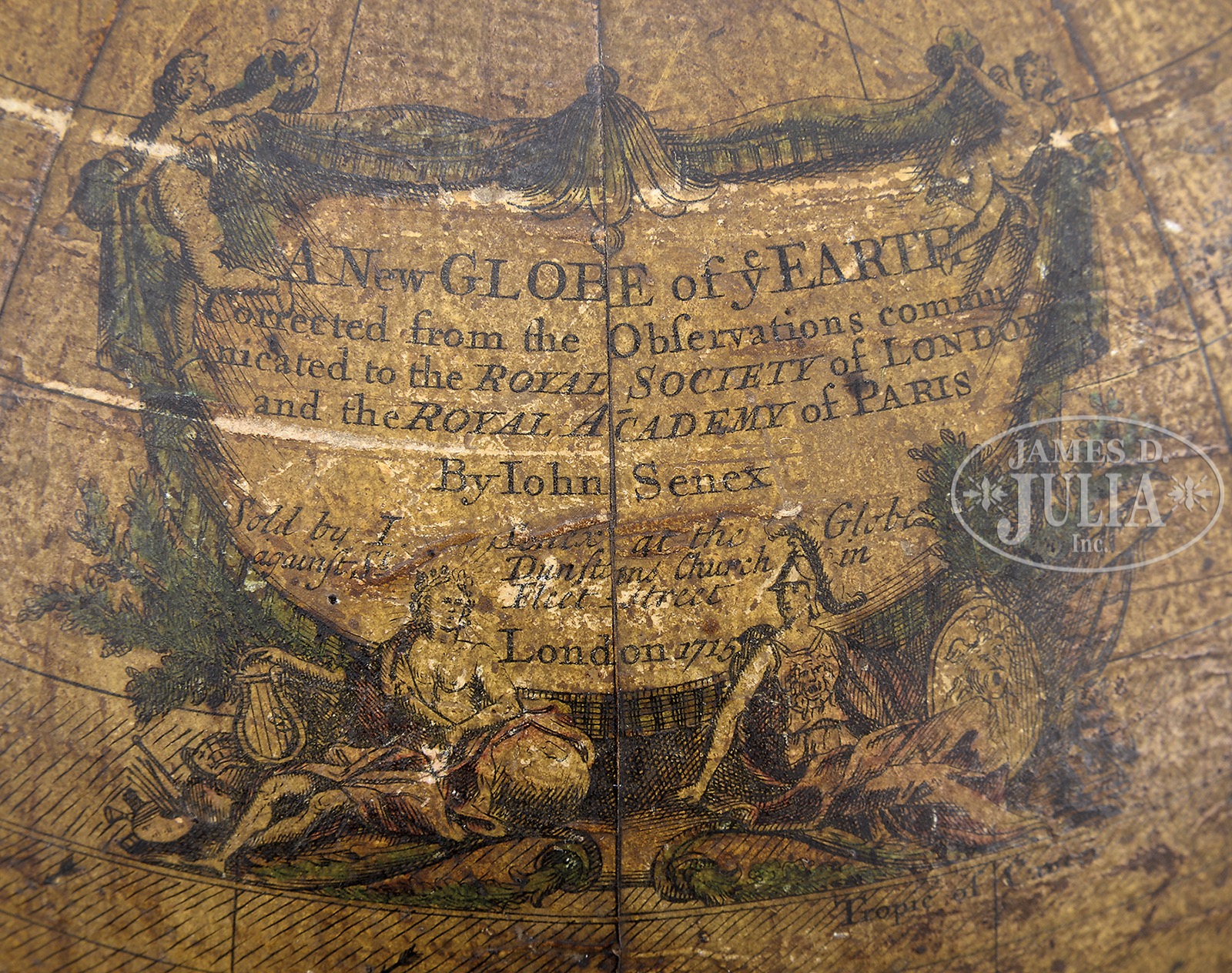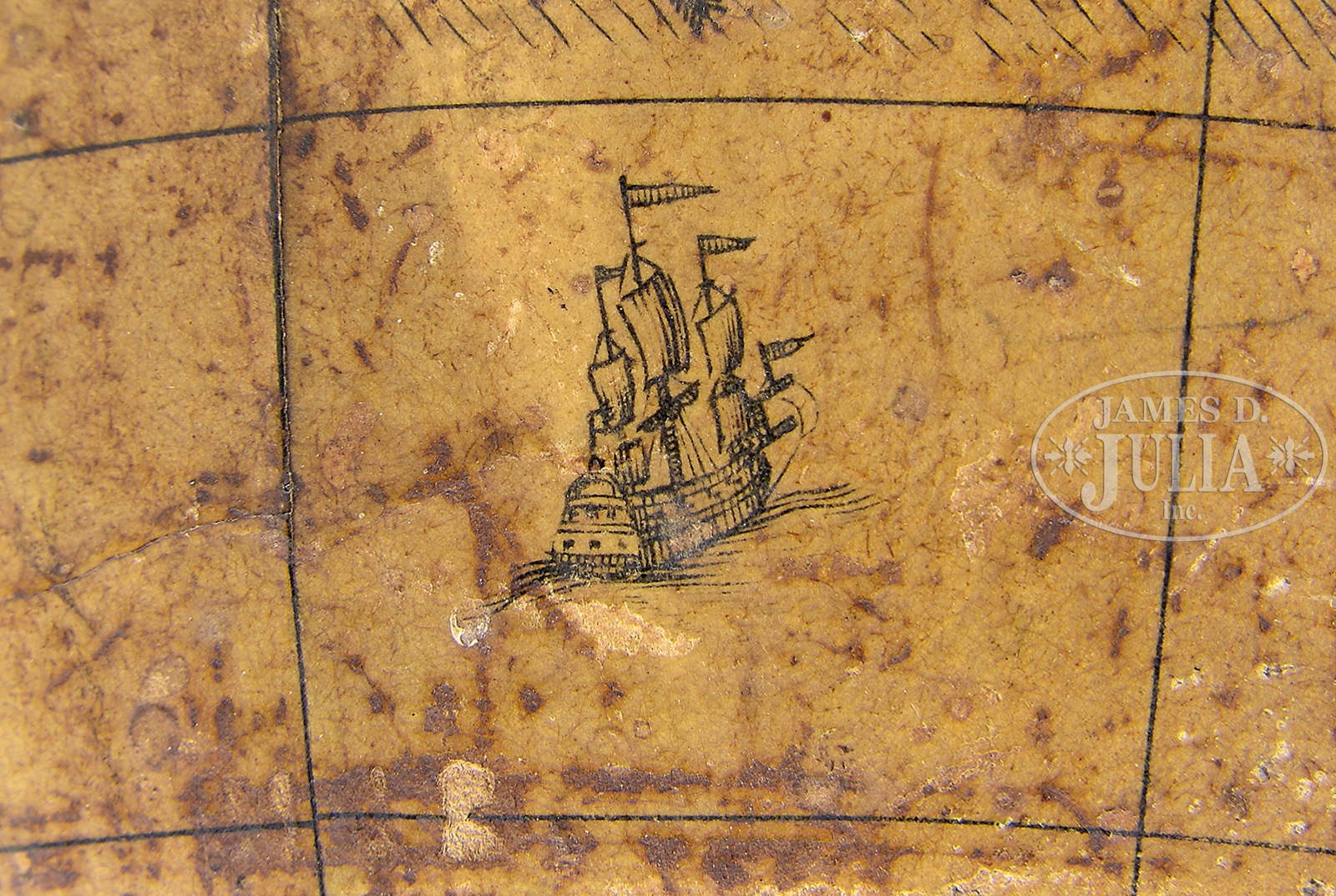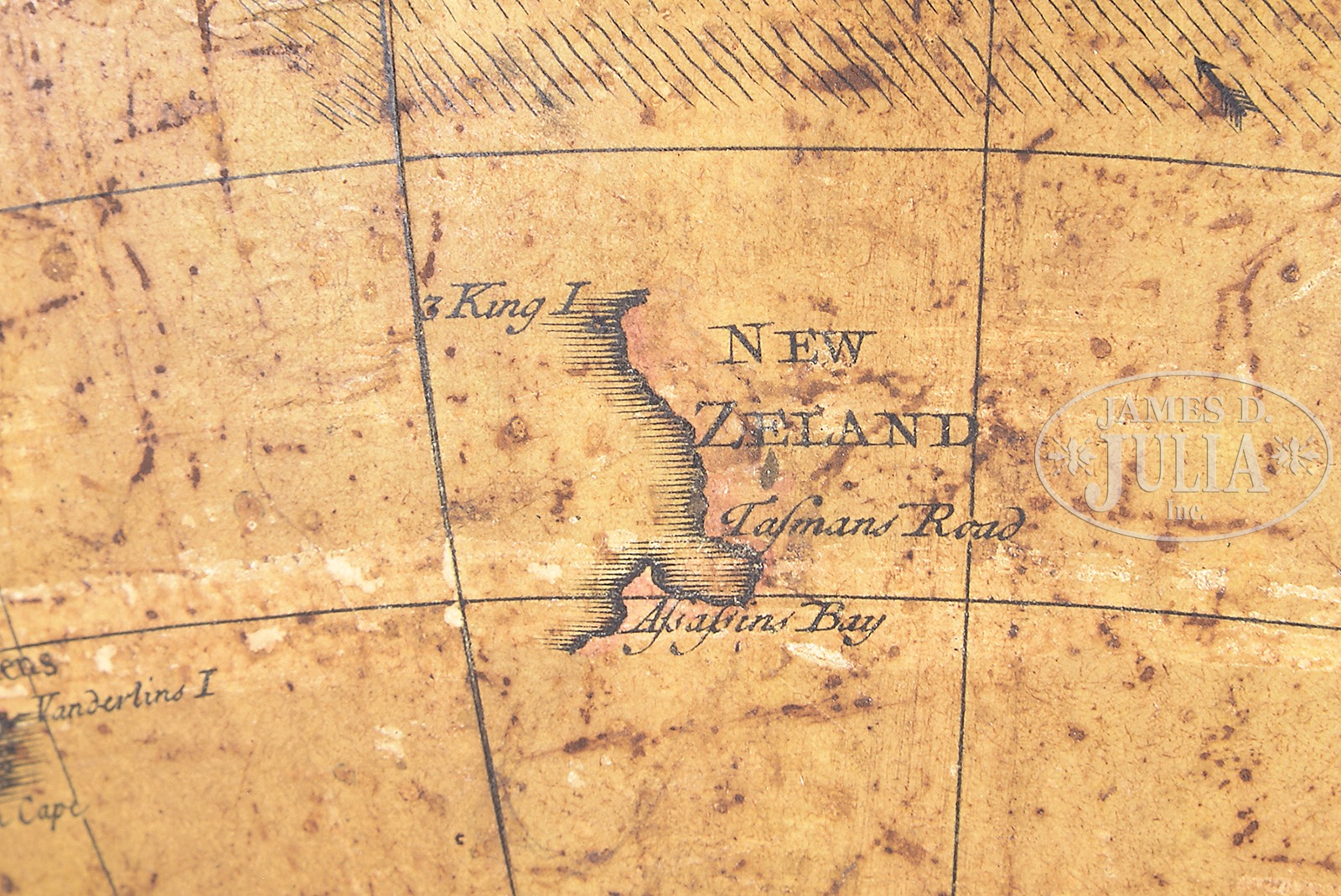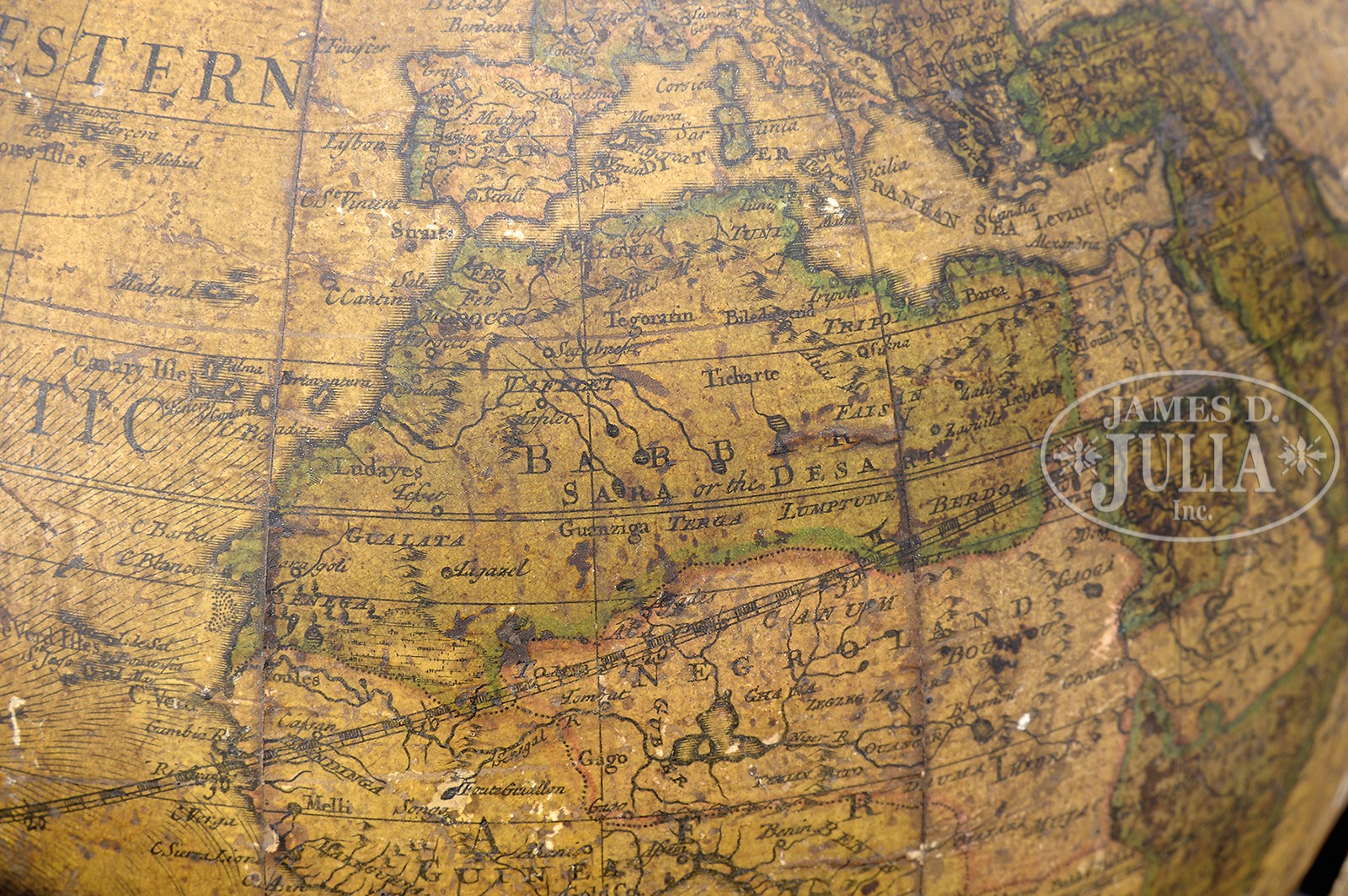| Image | Lot | Price | Description |
|
2091
|
$51,425.00
|
IMPORTANT AND RARE PAIR OF CELESTIAL AND TERRESTRIAL GLOBES BY JOHN SENEX (1678 – 1740).Circa 1715, England. Each 8-3/4″ diameter tabletop globe mounted on its original baluster and ring turned stand. The terrestrial globe with cartouche bordered in foliage and drapery, a pair of classical figures seated beneath, and inscribed “A NEW GLOBE OF YE EARTH Corrected from the observations communicated to the ROYAL SOCIETY OF LONDON and the ROYAL ACADEMY OF PARIS By JOHN SENEX. Sold by J. Senex at the globe against St. Dunstons Church in Fleet Street. London 1715“. The globe mounted within a brass meridian fitted to the medial stand. With this version the “Isle De California” is depicted as an island running the length of the North American continent. The Pacific ocean is included with “THE GREAT SOUTH SEA” or “MAR DEIZUR”. Present day Australia is outlined as only a partial continent and labeled “NEW HOLLAND”. The globe is comprised of twelve engraved and decorated gores. The celestial globe similarly mounted on a conforming stand with brass meridian. This globe is lavishly decorated with all of the constellations. In the northern hemisphere Pegasus is depicted as a detailed winged horse, the constellation of Ursa Major is depicted by a large bear in close proximity to Leo Major and Leo Minor depicted as two male lions, Lobster nebula is realistically depicted. The southern hemisphere is dominated by a large Viking ship for the constellation Argo Navis and by the constellation Cetus depicted as a large sea monster with coiling finned tail. The constellation Sagittarius depicted by a Centaur with drawn bow. The globe is comprised of twelve engraved and decorated gores. SIZE: Overall 14″ t x 13-1/2″ diameter (stand). PROVENANCE: In the history provided by the current owner, this pair of globes was originally owned by Edward Holyoke (1689 – 1769) Ninth President of Harvard College. They were then gifted to his son Edward Augustus Holyoke (1728 – 1829) in 1746 upon his graduation from Harvard College. The globes were then gifted to his grandson Joshua Holyoke Ward (1776 – 1840) in the year 1820. Affixed to one of the globe stands is an old paper label, partially legible, inscribed with the date “1746”, “To J. H. Ward in 1820”. The globes then passed by descent through the Holyoke-Nichols family to the present owner. CONDITION: The terrestrial globe with overall soiling, darkening of varnish commensurate with 300 years of age, 2″ diameter puncture hole in the northeast quadrant of North America resulting to damage of interior plaster, although the paper of two gores is torn as a result of the damage it appears much of the paper still exists within the depression. There is a line of abraded surface corresponding with 45 degree longitude resulting from friction with the brass meridian. Spot areas of loss at abrasion at Equator and along the line of 50 degrees south. The stand with aforementioned paper label is mostly intact but with extensive paper loss to median shelf. The Celestial globe with a 5-1/2″ horizontal crack along the Equator terminating in a 1″ diameter concussion damage. Within this area is 1/2″ loss to globe surface and plaster with additional cracked plaster and split paper around the perimeter. The entire surface with soiling and darkened varnish and with spot abrasions and spot paper loss throughout, estimated at 2% of the overall surface. Brass meridian intact and functional. The stand missing two sections of the median shelf at opposing ends, each approximately 8″ in length with significant loss to paper surface. Both globes and corresponding stands have original untouched surfaces, the stands now with nearly opaque patina. The globes darkened by age as noted. Please refer to detail photographs of areas with most significant damage. In our opinion both globes can be professionally restored to a significant degree. 51018-1 (30,000-50,000) – Lot 2091
Auction: Fine Art, Asian & Antiques - Winter 2017 Please Note: All prices include the hammer price plus the buyer’s premium, which is paid by the buyer as part of the purchase price. The prices noted here after the auction are considered unofficial and do not become official until after the 46th day. |

